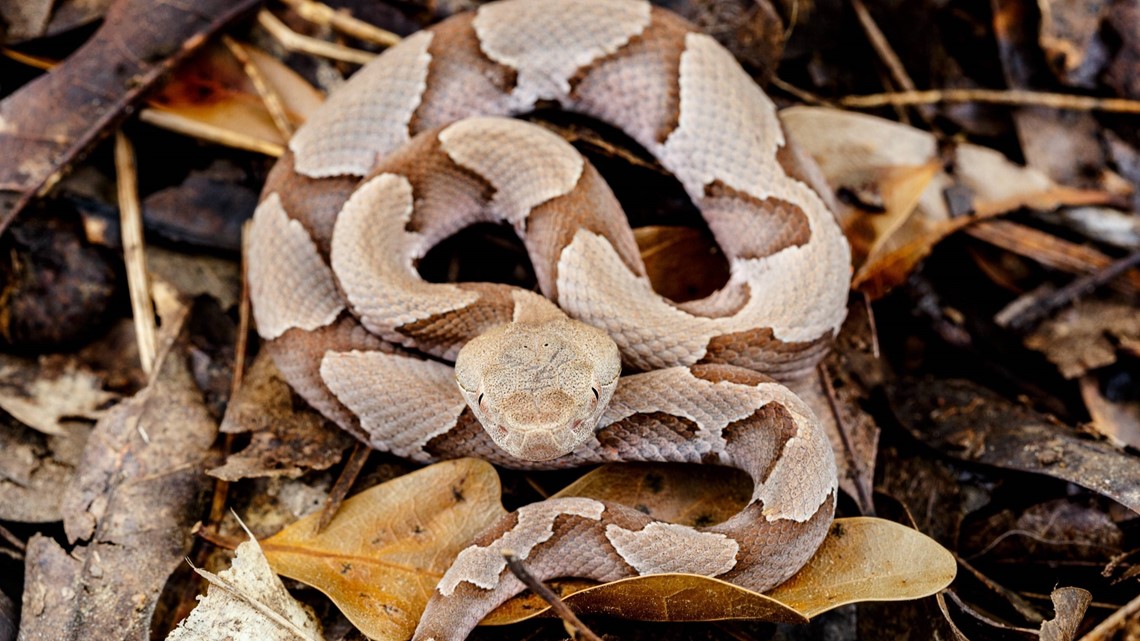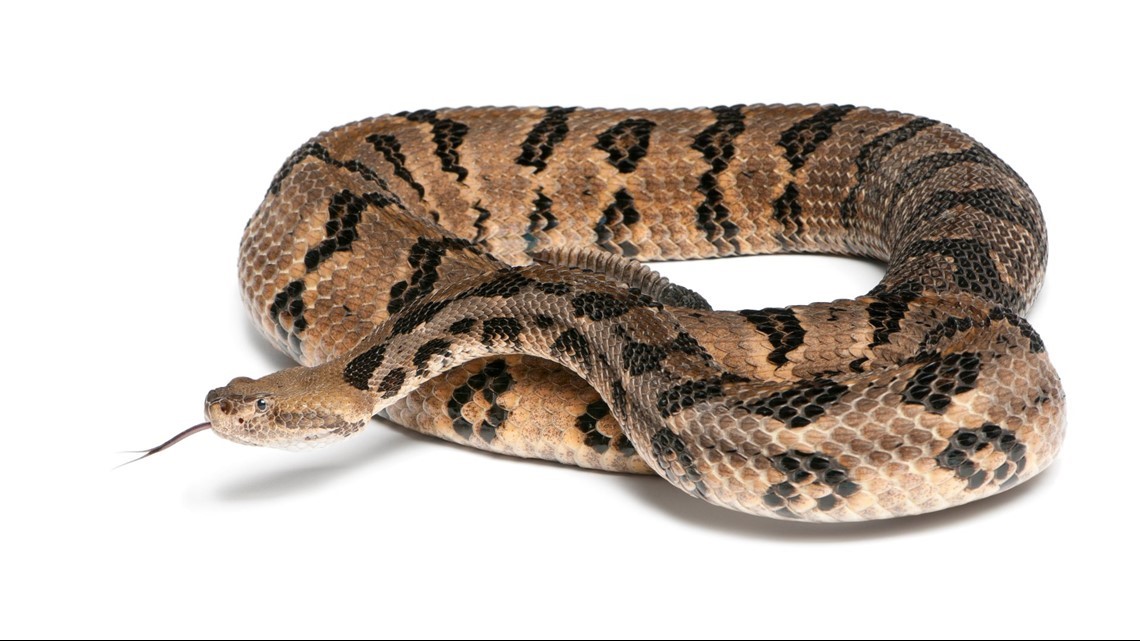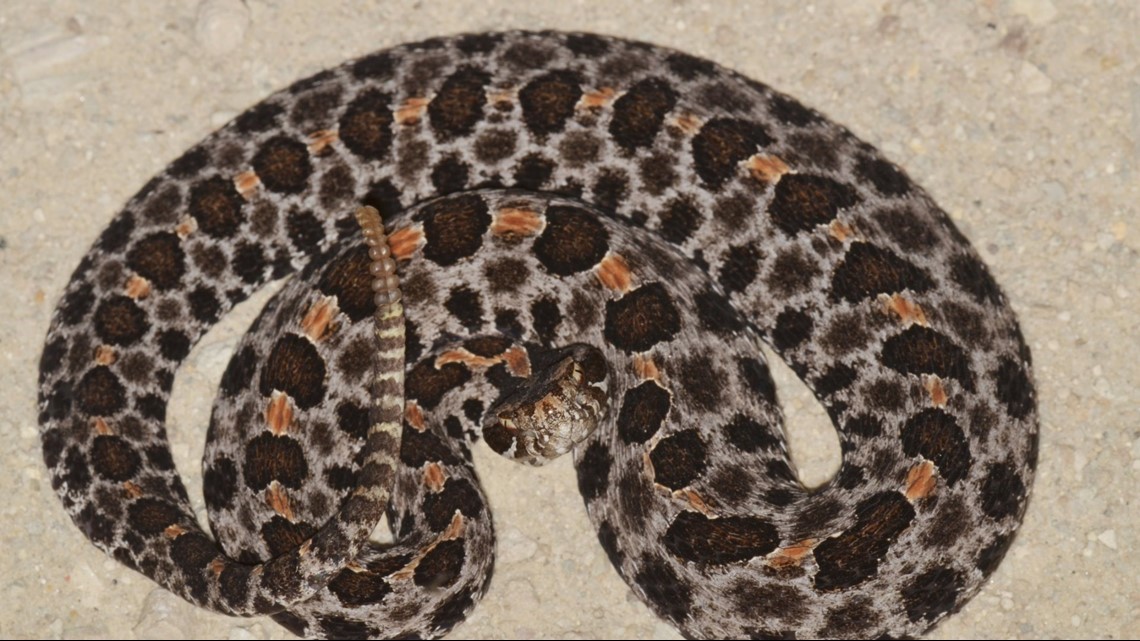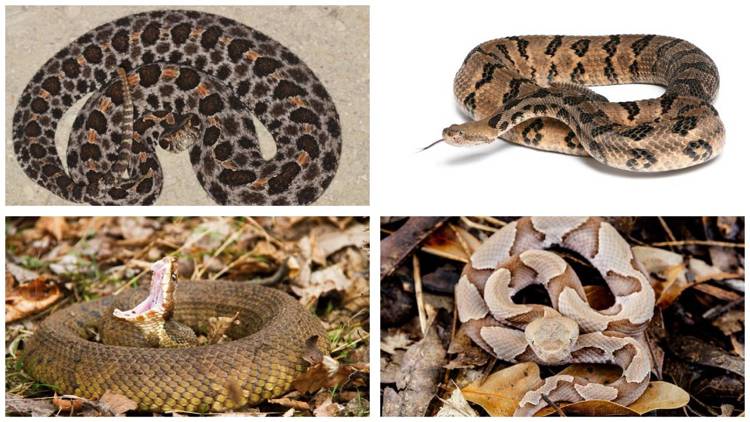KNOXVILLE, Tenn. — All sorts of snakes are slithering across the Volunteer State as summer gets into full swing. Of Tennessee's 32 different species of snakes, there are four in particular you should watch out for.
The Tennessee Wildlife Resources Agency said July 16 was World Snake Day, which highlights the biggest obstacles that snakes often face. According to TWRA, snakes are highly effective predators and play a role in maintaining the balance of nature.
Advocates for Snake Preservation listed many reasons to celebrate the reptiles, including but not limited to their ability to be natural pest control.
"They eat vectors and carriers of many diseases, including The Plague and Lyme disease," the group said. "Snakes won’t raid your garden or chew up your wires, but they will eat the critters that do."
Twenty-eight of those snakes are virtually harmless to people, but four are venomous: The Copperhead, the Timber Rattlesnake, the Cottonmouth and the Pygmy Rattlesnake. Here's what you need to know about these four snakes.
Copperhead
According to the agency, two subspecies are found in Tennessee: the Southern Copperhead which can be found in West Tennessee and the Northern Copperhead which can be found across the state.
"The subspecies interbreed along a broad zone where the ranges meet," TWRA said.
The snake is described as medium-sized, heavy-bodied and can grow up to 36 inches in length. Copperhead snakes have large, triangular-shaped heads and vertical pupils. They also have distinctive brown "hourglass" crossbands that are wide on the sides and narrow at the center of the back, TWRA said.
"Body color is variable, but is usually light brown or gray," TWRA said. "The belly is usually gray to pink with darker blotches. Facial pits occur on each side of the head between the eye and nostril and a little below."
The agency also said that young copperheads resemble adults, but have bright yellow tails.
These snakes can often be found in forested habitats. They avoid open areas such as pastures and fields. Copperheads tend to be found on rocky or wooded hillsides with plenty of rocks for cover.
"Copperheads can also be found in urban and suburban environments, as well as near wetlands and stream edges," the agency said.
Their diets often consist of mice, but can also consist of small birds, lizards, other snakes, amphibians and insects.
The copperhead's bite is painful, but its venom is usually not potent enough to be fatal on its own. Obviously, you wouldn't want to be bitten by one, so don't provoke or approach one if you see it.


Timber Rattlesnake
The Timber Rattlesnake is the largest and most dangerous of the four venomous snakes within the state, according to TWRA. These reclusive snakes are one of two venomous snakes that can be found in East Tennessee, with the other being the Northern Copperhead.
These snakes tend to be large and heavy-bodied, growing up to 60 inches, or around five feet, in length. Timber Rattlesnakes have a triangular head, vertical pupils and the characteristic rattle at the end of the tail, TWRA said.
The color of these snakes can often vary drastically but tend to be gray with a black tail.
"Other colors may include yellow, tan, brown, pink, dark brown, or black," the resource agency said. "Black chevron-shaped crossbands occur all down the body. Typically rust-colored stripes occur down the center of the back."
This species is often found in heavily wooded forests with rocky, south-facing hillsides, TWRA said. They can also be found around mountains, swamps, cane thickets, wooded stream corridors and rural habitats.
"It is common to see Timber Rattlesnakes coiled near fallen logs or sunning on rocks," according to TWRA.
TWRA said the diet of the Timber Rattlesnake consists of small rodents such as mice, rats, chipmunks and squirrels but can often include birds, lizards and other small mammals.
"Prey is killed by a venomous bite, in which the venom is injected by fangs located in the snake's mouth," TWRA said.
These snakes tend to stay away from places where people dwell, but if you ever come across one: Never attempt to approach it or handle it. Their bite is potentially fatal.


Cottonmouth
The venomous Cottonmouth snake, also known as the "water moccasin," can be found in West Tennessee, according to TWRA.
TWRA describes this species as large and heavy-bodied, growing up to 42 inches in length. Cottonmouths have keeled scales, vertical pupils and a triangular head.
"Western Cottonmouths are dark olive-brown to almost black with dark crossbands that may not be visible," TWRA said. "The top of the head is dark brown or black and a dark, wide band may be visible from the snout through the eye and onto the neck."
This species is often found in swamps, sloughs, wetlands and drainage ditches. They can also be found around rivers and lakes, according to the agency.
"They can be found swimming in the water, coiled on the bank, or in vegetation along the shore," TWRA said.
Cottonmouth's diet consists of mostly fish, frogs, salamanders, lizards, birds, rodents and other snakes.
The Cottonmouth snake is often confused with other non-venomous water-dwelling snakes but luckily is not found in East Tennessee. However, the bite of the snake can cause temporary or even permanent tissue damage, internal bleeding and extreme pain.
The bite of the Cottonmouth snake can potentially be fatal.


Pygmy Rattlesnake
The final of the four venomous snakes found within the state is the Pygmy Rattlesnake. According to TWRA, this species is one of the smallest and least known venomous snakes in the state.
The Tennessee Wildlife Resources Agency describes the snake as small and colorful, growing only to a maximum of around 20 inches in length.
"The body color is gray or tan with an orangish-brown mid-dorsal stripe usually present," TWRA said. "There are dark blotches, typically bar-shaped, running along the length of the back with one or two rows of dark spots along each side of the body."
According to the wildlife agency, the Pygmy Rattlesnake has a wide, black stripe that starts at the eye and slopes down to the corner of the mouth. the young of this species have yellow-tipped tails.
This species of rattlesnake is seen in a variety of habitats, according to TWRA, but is usually found in close proximity to water. This species is often in flood plains, wetlands and moist fields.
Pygmy Rattlesnake's diet consists of frogs, lizards, small snakes, amphibians and small rodents.
"Eastern Pygmy Rattlesnake is listed as Threatened by TWRA and considered rare to very rare and imperiled by the Tennessee Department of Environment and Conservation," TWRA said.
The Pygmy Rattlesnake bite can be painful, however, their bite is generally not life-threatening to people. Bites from this species can be more serious to children or small pets.


Other snakes found in the state that are not venomous
- Eastern Wormsnake
- Scarlet snake
- North American Racer
- Ring-necked Snake
- Red Cornsnake
- Gray Ratsnake
- Red-bellied Mudsnake
- Easter Hog-nosed Snake
- Yellow-bellied Kingsnake
- Common Kingsnake
- Milksnake
- Coachwhip
- Mississippi Green Watersnake
- Plain-bellied Watersnake
- Southern Watersnake
- Diamond-backed Watersnake
- Northern Watersnake
- Rough Green snake
- Pine snake
- Queen Snake
- DeKay's Brown snake
- red-bellied Snake
- Southeastern Crown Snake
- Western Ribbonsnake
- Eastern Ribbonsnake
- Common Gartersnake
- Rough Earrthsnake
- Smooth Earthsnake
More information about the snakes of Tennessee can be found on TWRA's Website.



